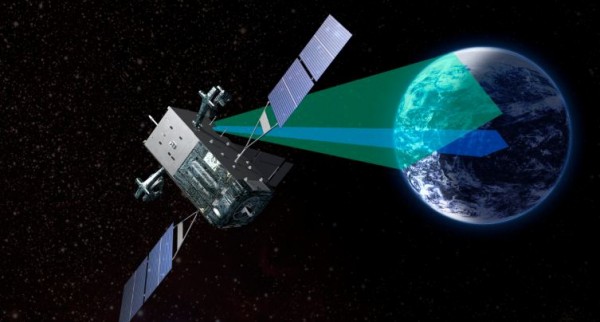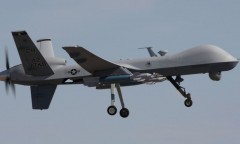By Arthur Dominic J. Villasanta , | March 31, 2017

SBIRS satellite.
The United States plans to win the ongoing but largely unnoticed "Space Arms Race" against both China and Russia with vastly superior new technologies.
All three countries recognize space as the "new high ground" that must be conquered for terrestrial military operations to succeed in times of war. This strategic reality has made necessary the development of weapons and technologies adapted to fighting in the region of space extending from low Earth orbit (LEO) to geostationary orbit (GEO).
Like Us on Facebook
LEO is an orbit with an altitude between 160 km and 2,000 km above sea level. GEO is a circular orbit 35,786 km above the Earth's equator and following the direction of the Earth's rotation.
Most spy satellites and GPS satellites are in LEO while larger satellites such as missile launch warning satellites are located in GEO.
Western military experts concur that a "Space Arms Race" is underway. The U.S., Russia and China are developing "space weapons" such as satellite jammers, ground-based lasers to blind satellites and high-power microwave systems to deny the high ground of space to their adversaries.
Space weapons will be used in the event of mankind's first "Space War" to destroy or neutralize global navigation satellites such as GPS and GLONASS; surveillance satellites, communications satellites and other military satellites.
Experts, however, believe the U.S. enjoys a huge technological edge in space weapons.
"My guess is that our capabilities to carry out a war in space are a lot better than the Chinese and Russians," said Michael Krepon, a space security expert and co-founder of the Stimson Center (a think tank) in Washington, D.C.
The U.S. is heavily dependent on satellites. It uses satellite technology in aboard aircraft and warships to carry out precision strike against adversaries such as ISIS. U.S. infrared satellites provide early detection of ballistic missile launches from both China and Russia, as well as North Korea.
Experts say the biggest threats to U.S. satellites are "non-kinetic threats" such as jamming of satellite-based capabilities (GPS) and communications. They note that U.S. satellites might be vulnerable to attacks that disrupt U.S. combat operations around the world.
"Not surprisingly, nations are now actively testing methods to deny us continued use of space services during conflict," said retired U.S. Air Force Gen. William Shelton, former commander of the U.S. Air Force Space Command.
-
Use of Coronavirus Pandemic Drones Raises Privacy Concerns: Drones Spread Fear, Local Officials Say

-
Coronavirus Hampers The Delivery Of Lockheed Martin F-35 Stealth Fighters For 2020

-
Instagram Speeds Up Plans to Add Account Memorialization Feature Due to COVID-19 Deaths

-
NASA: Perseverance Plans to Bring 'Mars Rock' to Earth in 2031

-
600 Dead And 3,000 In The Hospital as Iranians Believed Drinking High-Concentrations of Alcohol Can Cure The Coronavirus

-
600 Dead And 3,000 In The Hospital as Iranians Believed Drinking High-Concentrations of Alcohol Can Cure The Coronavirus

-
COVID-19: Doctors, Nurses Use Virtual Reality to Learn New Skills in Treating Coronavirus Patients










